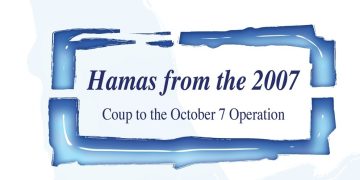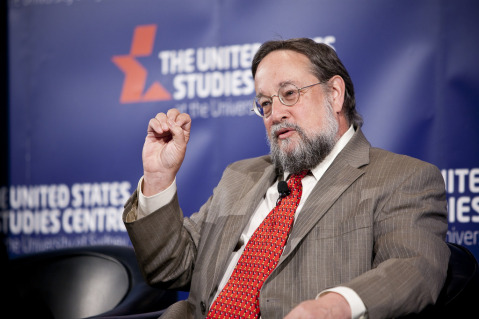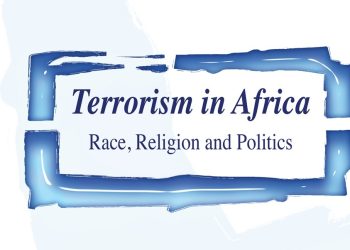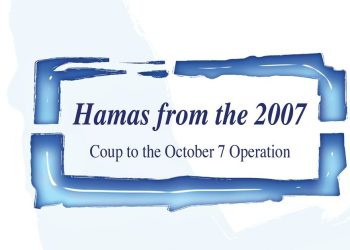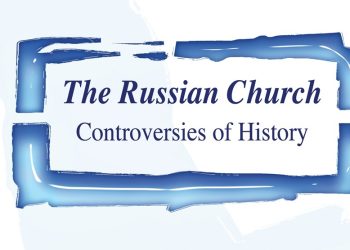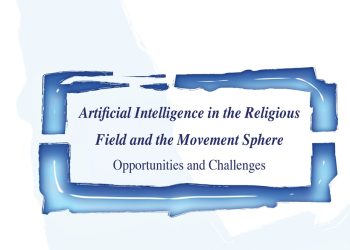Consider the fact that, on March 23 of this year in Paris, two hoodlums murdered a Holocaust survivor, 85-year-old Mireille Knoll, in a crime that French prosecutors characterized as one of an anti-Semitic motivation. Many observers leapt to the conclusion that this was a terror-inflected hate crime perpetrated by radical Muslims, partly because earlier that same day there had been an ISIS-inspired terror attack on a supermarket in the small French town of Trèbes.[1]
But even at the time, based on what was reported at the inquest, the charge of anti-Semitic motivation seemed not to fit the facts. The prosecutors no doubt felt political pressure to describe it as anti-Semitic, partly because of the symbolism of Madame Knoll’s having escaped the 1942 Vichy roundup at Vel d’Hiv. But the suspects more resembled garden-variety criminal lowlifes who murdered her for kicks or spare change—or perhaps, as one of them confessed, because she had earlier reported the other to the police.
One of the murder suspects is Alex Carrimbacus, a man who from the name we may surmise had as of March 23 never in his life set foot in a mosque. His accomplice, Yacine Mihoub, was of North African origin and so in some sense probably a Muslim, but at the time of the crime he was neither a devout nor a radicalized one. Unlike the terrorist in Trèbes, who was indeed a radicalized Muslim known to French security forces, Madame Knoll’s murderers were not.
Mihoub, an alcoholic and a drug addict, had previously been committed to a mental hospital after having threatened to burn down his own mother’s apartment building. The murder suspects met in prison, where Mihoub was doing time for sexually assaulting a 12-year-old girl, and Carrimbacus for aggravated theft. Carrimbacus may have tried to exculpate himself by telling the police that Mihoub did it because she was a Jew and he was a Muslim. Carrimbacus claimed that he did not know Madame Knoll was Jewish until Mihoub told him before murdering her. Mihoub, however, who had known Madame Knoll since his childhood, said emphatically that he didn’t kill her—Carrimbacus did. Carrimbacus alone is the source of the report that Mihoub cried the takbir before murdering Madame Knoll; but Carrimbacus, pretty clearly showing cognitive signs of protracted substance abuse, couldn’t even keep that story straight in the course of his interrogation.
Now consider the fact that almost exactly two years earlier, on March 22, 2016, three terror attacks were perpetrated in Brussels by a supposedly ISIS-affiliated terror cell located in the Molenbeek section of town. That same section of town, it turned out, had produced the terrorists who attacked Paris in November 2015. What do we know about this terror cell?
We know that it consisted mainly of men of Moroccan Berber descent, including Ibrahim El Bakraoui, Abdelhamid Abaaoud, Mohamed Abrini, Najim Laachraoui, Abdelkrim Motii, Younes Tsouli, Salah Abdeslam and Brahim Adbeslam. But what stands out is that, like Mihoub, none of these men were particularly pious. Most seemed to have been proselytized via the internet by Anwar al-Awlaki, but most—all of whom were either born or grew up in Europe—lived secular lives. According to numerous press reports at the time, many were petty criminals who hung around drinking in bars; several were familiar, let us put it, with many of the neighborhood’s prostitutes; and many bought, sold, and used drugs. Not exactly models of Islamic rectitude.
Now consider the fact that on September 10, 2003, Swedish Foreign Minister Anna Lindh was murdered in the ladies’ section of the Nordiska Kompaniet department store in central Stockholm by Mijailo Mijailović, a man born in December 1978 in Sweden to Serb parents. Mijailović later claimed that at the time he “felt hatred of all politicians”, both Swedish and Serbian, and blamed his problems on them. He said that it had been “a coincidence” that his victim had been Lindh, and that he had been high on a hypnotic drug at the time: Flunitrazepam.
Also known as Rohypnol, Flunitrazepam is an intermediate acting benzodiazepine used in some countries to treat severe insomnia. It is a powerful hypnotic even when used in small amounts as ordered by physicians, and professionals only ever use it as a short-term medication. The reason is that Flunitrazepam impairs cognitive functions that may appear as lack of concentration and confusion. It also impairs psychomotor functions and abuse (long-term use or high doses) has been known to cause aggressiveness, agitation, loss of impulse control, talkativeness, agitation, confusion, convulsions, and violent behavior. Some have termed Flunitrazepam a date-rape drug, as well.
Mijailović had long-running psychiatric issues. Politicians did not cause them; an abusive alcoholic father who used to beat his mother in front of him might have, however. But his psychiatric issues were exacerbated by a long history of drug usage. Mijailović reportedly stabbed Lindh just five days after having been released from a psychiatric institution, which is probably where, somehow, he got his hands on Flunitrazepam. No Flunitrazepam, almost certainly no murder.
DROP CAP
What do these three sad tales of violence have in common, aside from the fact that they all occurred in Europe? Drugs. They all involve drug use and abuse of one kind or another.
Doubtless there are many salafi-minded terrorists who are sober as a judge, as we Americans like to say. But in addition to the radicalization of Islam, we now have the Islamicization of radicalism, as Olivier Roy has called it. We have, in other words, “Islam” pressed into service not as a cause or a belief system, but as a tether for identity politics among marginalized Muslims—often first-generation European—outside of Muslim-majority societies. And it turns out that a lot of these individuals use and abuse drugs.
The phenomenon is not limited to Europe: Both the Tsarnaev brothers of Boston Marathon fame and Omar Mateen of the Orlando gay nightclub massacre were not particularly pious or knowledgeable Muslims. They were Daghestani and Pashtun outliers, respectively, in an American cultural context they struggled to understand and fit into—and both latched onto Islam as a counter-identity. And drugs? Yes, indeed.
Mateen reportedly researched anti-psychotic drugs before his attack, and aside from substantial cannabis and steroid use to which he admitted, may well have tried a few of them in a cycle where fearing a descent into madness had the ironic affect of helping to drive him mad. As for the Tsarnaev Brothers, the elder brother, Tamerlane, was deep in dope, selling and using heavily. Indeed, after his death, Federal prosecutors named him as a suspect in a brutal, drug-related triple murder that took place two years before the Boston Marathon bombing. Younger brother Dzhokhar was also a heavy doper, and a well-known drug dealer at UMass-Dartmouth.
None of this should be terribly surprising.[2] The human urge to stupefication is a fact of life, and it has been a fact of life for thousands of years. Anthropologists have this joke, or quip, which holds that men were probably pharmacologists before they were farmers. There is even some evidence from archeological sources that one of the reasons the agricultural revolution stuck was so that people could have a reliable supply of intoxicants. Ancient Near Eastern festivals that date to the spring barley harvest, or six or seven weeks of fermentation after it, suggest ritual paeans to beer and mead.
Why do some people stupefy themselves? There are basically two classes of reasons. The first is pain: Many people self-medicate because something is hurting them. The second is anxiety: Some people sense a greater distance between how their life is and how they think it should be or want it to be. With pain, drug use can bring at least temporary relief, even though it may cause other problems down the line. With anxiety, a much squishier issue, drugs can dull or alter consciousness. The underlying anxiety may remain but, depending on the drug, the anxiety can temporarily be dissociated from consciousness. As the anesthesiologist Ronald Dworkin puts it with respect to opioids,
Opioids work not by eliminating pain but by detaching people from their pain, causing them to grow indifferent to it. Other psychoactive drugs work similarly. The life circumstances that cause unhappiness may persist, but for those taking antidepressants, anti-anxiety drugs, and especially alcohol, the feeling of unhappiness becomes vaguely distant. Users care about it less, or even imagine that the unhappiness belongs to someone else. Whether it is opioids, alcohol, antidepressants, or anti-anxiety agents, what bothers sober people does not bother drugged people.[3]
Pain aside, what creates the kinds and levels of anxiety that lead people to use drugs? Well, some personality types are more prone to drug use and addiction no matter where or when they live. It is also clearly the case that the availability of drugs, and the existence or lack thereof of social taboos against their use, will also factor into how many people use drugs, how often they use them, and how much of them they use. So culture matters: Some are relatively permissive when it comes to drug use—at least certain kinds of drugs—while others are less so.
All else equal, however, it also seems to be the case that some sets of social conditions are more conducive to producing anxiety than others. But what kind of social conditions may not be entirely obvious.
It stands to reason that perceptions of danger, physical or more abstract, will increase anxiety. So ambient fear produces anxiety. But so can alienation and a sense of meaninglessness that is associated with weak social bonds. Thus, we know that loneliness produces depression and anxiety, as well, and lonely people are far more prone to drug abuse than people with normal, healthy social ties.
Interestingly, however, affluence can also produce anxiety, when people think that having a lot of money and stuff is supposed to make them happy, and of course it often doesn’t. As John Steinbeck expressed it in East of Eden, “Maybe everyone is too rich. I have noticed that there is no dissatisfaction like that of the rich. Feed a man, clothe him, put him in a good house, and he will die of despair.” And that, in turn, could be because most people do exhibit, as Dostoevsky once put it, “a craving for community” that affluence does not guarantee. Wrote Robert Nisbet in his 1982 book Prejudices: A Philosophical Dictionary:
What we know least about as the result of thousands of years of civilized history is affluence. We are the first affluent state, politically, psychologically and sociologically. And there is something about affluence that does not seem to produce community. Poverty will produce community—a sense of spirit, of organization, or working together. Affluence doesn’t seem to.
It’s not a great surprise—or it shouldn’t be, anyway—that wealthy secular societies like those of the West produce bumper crops of anxiety, and drug taking.
Consider the trajectory, as best we can gauge it, in the United States. From colonial times and especially during the 19th century America was a pretty consistently drunken place. Foreign visitors regularly noted it; old-timers from England liked to blame it on immigrant Scots and later Irish; and it was not for nothing that Prohibition made its way onto the political agenda. The famous “Johnny Appleseed” was not welcomed far and wide as he roamed the American frontier for the sake of apple pie—it was all about hard cider.
By the 1880s or thereabouts, in western Europe as well as in the United States, pharmaceutical entrepreneurs began to parse the various unpleasant feelings that prodded people to stupefy themselves with drink into categories (pain, insomnia, depression, anxiety), and then tried to target them with specific agents. Alcohol ceased to be the only solution as first laudanum and then codeine were added to the apothecary. By the end of the 19th century at least one in 200 Americans had an opioid addiction problem, not to speak of the continuing rampant abuse of alcohol.
Now fast-forward to today, and what do we see? About 60 million Americans use a sleep aid at night, about 30 million are on antidepressants, around 15 million are on anti-anxiety drugs, approximately 16 million regularly abuse alcohol, and 65 million admit to binge drinking at least once a month. Then there are the 2.1 million with an opioid abuse disorder. Add it all together and the number of Americans who regularly stupefy themselves comes to about half the adult population. This is not historically anomalous, except maybe just to a degree or two. It would not surprise me if the data on most wealthy, secular European countries, were such data available and reliable, were roughly similar.
Obviously, only a very tiny percentage of self-medicated Americans get publicly violent in a way we would associate with domestic terrorism. But it is likely that most, perhaps nearly all, of those who are thusly associated fall into the ranks of the regularly stupefied. It remains for more meticulous research to establish the specifics. Unfortunately, we do not always get toxicology read-outs on (often dead) terrorists.
DROP CAP
And what of Muslims in Europe, the immigrant and especially first-generation cohorts from which nearly all terrorists that have attacked European societies in recent times have come?[4] Again, only a very tiny percentage of immigrant and first-generation Muslim cohorts have been involved in terrorism, but aside from IRA and Basque terrorists of earlier years, nearly all of the attackers over the last two decades have been of Middle Eastern Muslim origin. The question is how many of that small number have been drug users?
For now, I can only speculate. As we have seen, many and probably most of these individuals lived secular and impious lives from an orthodox Sunni Muslim perspective. Many and probably most have been marginal misfits, with low personal social capital, in both local Muslim and national communities that are very affluent by almost any reasonable standard—the specifics of marginalization and affluence obviously differing somewhat from country to country. A thumbnail guess of the kind of anxiety levels that typically lead to stupefication would be that they are high. My hope is that careful research by those with access to the relevant data will bear that out.
So yes, radicalization of Muslims in Europe is real, and it is a problem that counterterrorist experts and officials must acknowledge and deal with. But the ersatz Islamicization of radicalism born of confusion, fear, and anger is also real, and the intersection of that form of danger with stupefication is arguably real as well. I suspect that European officials whose job it is to protect their societies from terrorism know from experience about this intersection, and pay attention to it in their efforts at prevention. Expert analysis and scholarship, on the other hand, seem to have barely noticed it. There’s a doctoral dissertation for the taking.
Adam Garfinkle is Editor of The American Interest.
[1] For more details, see Claire Berlinski, “The Muted Soul: How the French Mourn,” The American Interest (July-August 2018).
[2] But just by the way—because I know what some of you are thinking—no, there is no ancient connection of drugs to violence through the supposed etymology of the word “assassin.” It has become a veritably unshakable urban legend in the West that the word “assassin” comes from the word hashish, the intimation being that members of the Nizari Ismaili sect of the 11th-13th centuries, hold up in the recesses of the Alborz Mountains of Iran (and later in Masyaf castle in Syria), used to steel themselves with drugs before going out and selectively killing high-ranking enemies. It’s a great story, but it isn’t true. The “order of the Assassins”—asasiyun—derives from an Arabic word meaning principle. Sunni enemies of the order made the word-play connection with low-life drug users, and clueless Europeans from Marco Polo to a 19th century French orientalist named Silvestre de Sacy took the word-play as etymological truth.
[3] Ronald Dworkin, “Doctor’s Orders: Misdiagnosing the Opioid Crisis”, The American Interest Online, July 26, 2018.
[4] It has been a long time since terror attacks in Europe have been perpetrated by Middle Eastern residents who came to Europe for the purpose, as with the Palestinian terror attacks of the 1970s.




